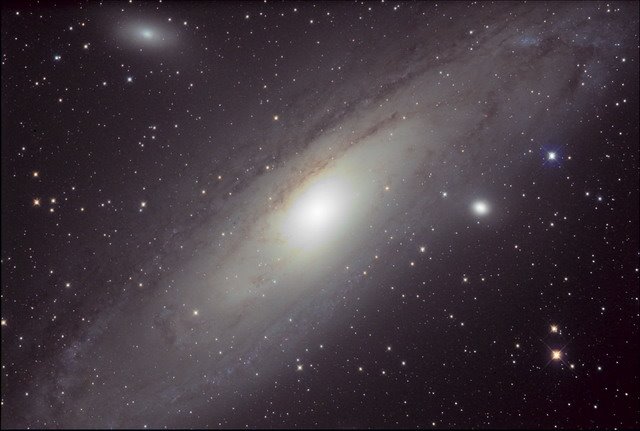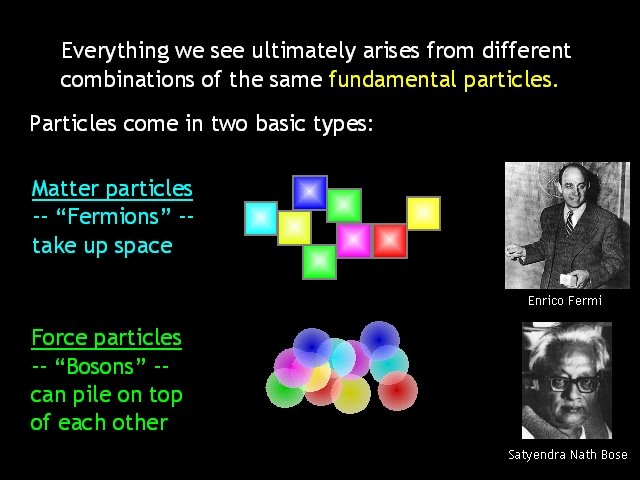|
|
Blogroll
|
|
Most recent articles |
|
Highlights |
|
States and Economies |
|
World economies: 15 of 50 largest economies are U.S. States: |
|
World States – Table 1 |
|
History and Society |
|
Fourth of July aboard the W.W. II aircraft carrier the U.S.S. Hornet |
|
A. L. Kroeber's The Civilization of California's Far Northwest |
|
The Arab Admiralty – and an Arab naval view of the Crusades |
|
Excerpt from “The Wife of Bath's Prologue” by Geoffrey Chaucer |
|
“Horsey” Vikings: exploring origin of the “Rohirrim” in The Lord of the Rings
|
|
The Battle of Crécy by Winston S. Churchill |
|
Monotheistic Paganism, or just what was it Christianity fought and faced? |
|
Medieval constipation advice for travelers: “A ripe turd is an unbearable burden” |
|
Alexis de Tocqueville's bicentennial: Anticipatory censorship in colonial America |
|
Antiquity vs. Modernity: Alexis de Tocqueville on the mind of the slaveholder vs. soul of America |
|
Federalism, and Alexis de Tocqueville on the origins of American democracy |
|
Science, Technology, Space |
|
Looking in the right direction – towards the future – with regard to global warming |
|
Know Your Neighborhood: from Andromeda to Fermions and Bosons |
|
Magnetars and Pulsars: Science's special section on pulsars |
|
The Geneva-Copenhagen Survey of Sun-like Stars in the Milky Way |
|
Galactic Central: the Black Hole at the Center of the Galaxy |
|
Politics and War |
|
America’s strong arm, wielding the Sword of Iraq, slays the multi-headed Hydra of Al Qaeda |
|
Regional and Personal |
|
Tamara Lynn Scott |
What wailing wight
Calls the watchman of the night?
William Blake
Whirl is king
Aristophanes
“Jumping into hyperspace ain't like dustin' crops, boy.”
Han Solo, another galaxy
|
Blogroll |
|
Grand Central Station |
|
Legal and Economic |
|
History and Society |
|
Science, Technology, Space |
|
Politics and War |
|
Eclectic |
|
Regional |
|
Reciprocal |
© Copyright 2002 – 2009
Michael Edward McNeil
Impearls: 2006-04-09 Archive
Earthdate 2006-04-09
| Know Your Neighborhood – from Andromeda to Fermions and Bosons |
|
It seems like I’ve always felt that as an aware, educated human being out in the world, one should at least attempt to “know your neighborhood” — seek to become familiar with the general layout and some significant detailed and specific knowledge concerning the locale(s) in which you live, work and hang out, and know something about how these relate to a broader scale of things.
But, in my view, this principle shouldn’t stop with mere local geography. I like to extend the concept of “neighborhood” far beyond our own locale to include our neighborhood of states in the United States, continents in the world, “neighborhood” of planets in the solar system, neighboring stars in the galaxy, galaxies in our “local group” cluster of galaxies, even some basic information about the structure of the universe as a whole. Then, too, collapsing down to the small scale, we have the overall makeup of atoms and subatomic particles; their combination in molecules and chemicals; the biochemical and biological structures of life; the major groupings of life in the biosphere; the evolutionary history of that life, and the geological and planetological histories of the Earth, Solar System, Milky Way, and beyond that, the universe. Oh, and mustn’t forget human history and society. Whew!
Concerning the various varieties of history, while it does take some effort of attention in absorbing quantities of things like raw numbers (dates) before one begins to get the overall shape of things somewhat straight, once one does so, it does provide a basic structure which informs to some degree one’s understanding of how things have come to be the way that they are.
I’m not saying that one should necessarily seek to know or learn a lot about any one of the foregoing areas of study, but one ought to, I think, seek to acquire an overall network of knowledge about them, and how they interconnect with other vital branches of knowledge.
Nor is this necessarily a daunting task. It’s my belief that just about any individual subject can be found to consist of a maximum of a dozen or perhaps a few dozen distinct entities that one must grasp to some degree to get a basic feeling for and comprehension of the topic at hand. It’s like learning a new alphabet, which all of us anciently comprehend. Few would believe at this point that mastering an alphabet of approximately A-Z size is beyond us.
Just to pick one particular example from out of the sky, one might want to come to learn more, for instance, concerning the so-called “local group” of galaxies to which our own Milky Way galaxy (and the Sun and our Earth along with it) belongs. To do this one would pick up pieces of knowledge such as that the gravity-bound cluster consists of more than 30 galaxies, the most prominent member other than the Milky Way itself being “M31,” the famous Andromeda Galaxy.
Andromeda is a great sister spiral galaxy which is actually somewhat larger than our Milky Way, the latter being some 100,000 light years in diameter, while Andromeda is more than 200,000 light years across, and located around 2.5 million light years away. The Triangulum Galaxy — M33 — is a third principal spiral galaxy in the local group, extending across perhaps two-thirds the diameter of the Milky Way.
Most of the other galaxies in the local group are quite small in comparison with these three, in which diminutive category would be counted such stellar assemblages as the irregular Large and Small Magellanic Clouds, which orbit round the Milky Way like satellites; while Andromeda lies surrounded by its own set of satellite galaxies.
The Andromeda Galaxy is actually the farthest sight the unaided human eye can discern. I recall relaxing one chilly autumn evening in the luxuriously warm pools of a marvelous natural hot springs in Idaho (Bonneville), while the stars glared coldly down through the swirling steam, pointing out Andromeda to my wife. Her response? “But it’s so dim!”
Yes indeed, when looking at the farthest spot the unaided eye can make out, millions of light years away, it is dim — but (and this is the point) it’s visible.
The light we see now from Andromeda departed from thence more than two million years ago — a time when our ancestors had brains little bigger than a chimpanzee’s.
But enough galactical-lollygagging around; we’re here today to also explore another aspect of our immediate neighborhood — the neighborhood of the subatomically small. Our purpose is to explore the world of the fundamental difference between (I know you’ve been waiting for it), ta ta: Fermions and Bosons.
Recall Nobel Prize winning physicist Enrico Fermi’s notable put-down of the entire science of subatomic physics, as it seemed to be taking off into absurd complexities during the 1950’s. Fermi remarked, “If I could remember all those names [referring to the growing population of subatomic particles], I would have been a botanist.” Since then physicists have struggled to bring simplicity out of complexity, and to a remarkable extent — with the discovery, for instance, that subatomic particles such as protons and neutrons are really composed of an inner structure of quarks — they have been successful.
Now, we have an intriguing slide presentation by Sean Carroll of the (wouldn’t you know it) Enrico Fermi Institute at the University of Chicago, which helps bring some order out of complexity for the rest of us in this regard (though it also baldly points out where considerable mysteries still reside).
I’d suggest clicking through to (this is slide no. 8 of) Carroll’s slide show, peruse the next few slides, maybe at some point jump back to the beginning, and then proceed through the entire set. It’s fascinating stuff for those of us with an interest in the fundamental sub- and superstructures of the universe. 2
1 Thanks to Wikipedia and image producer Peter Finnoff at Ice Fog Observatory for the public-domain photograph of the Andromeda Galaxy (M31).
2 Sean M. Carroll, “Dark Matter and Dark Energy: from the Universe to the Laboratory,” Department of Physics, University of Chicago.
Also worth checking out:
Sean M. Carroll, Spacetime and Geometry: An Introduction to General Relativity, graduate-level textbook on general relativity, Addison-Wesley, 2003.
Sean Carroll also formerly blogged at his personal site Preposterous Universe, and presently does so at the group blog Cosmic Variance.
| (Blank last screen) |
|
2002-11-03 2002-11-10 2002-11-17 2002-11-24 2002-12-01 2002-12-08 2002-12-15 2002-12-22 2002-12-29 2003-01-05 2003-01-12 2003-01-19 2003-01-26 2003-02-02 2003-02-16 2003-04-20 2003-04-27 2003-05-04 2003-05-11 2003-06-01 2003-06-15 2003-06-22 2003-06-29 2003-07-13 2003-07-20 2003-08-03 2003-08-10 2003-08-24 2003-08-31 2003-09-07 2003-09-28 2003-10-05 2003-10-26 2003-11-02 2003-11-16 2003-11-23 2003-11-30 2003-12-07 2003-12-14 2003-12-21 2003-12-28 2004-01-04 2004-01-11 2004-01-25 2004-02-01 2004-02-08 2004-02-29 2004-03-07 2004-03-14 2004-03-21 2004-03-28 2004-04-04 2004-04-11 2004-04-18 2004-04-25 2004-05-02 2004-05-16 2004-05-23 2004-05-30 2004-06-06 2004-06-13 2004-06-20 2004-07-11 2004-07-18 2004-07-25 2004-08-22 2004-09-05 2004-10-10 2005-06-12 2005-06-19 2005-06-26 2005-07-03 2005-07-10 2005-07-24 2005-08-07 2005-08-21 2005-08-28 2005-09-04 2005-09-11 2005-09-18 2005-10-02 2005-10-09 2005-10-16 2005-10-30 2005-11-06 2005-11-27 2006-04-02 2006-04-09 2006-07-02 2006-07-23 2006-07-30 2007-01-21 2007-02-04 2007-04-22 2007-05-13 2007-06-17 2007-09-09 2007-09-16 2007-09-23 2007-10-07 2007-10-21 2007-11-04 2009-06-28 2009-07-19 2009-08-23 2009-09-06 2009-09-20 2009-12-13 2011-03-27 2012-01-01 2012-02-05 2012-02-12


